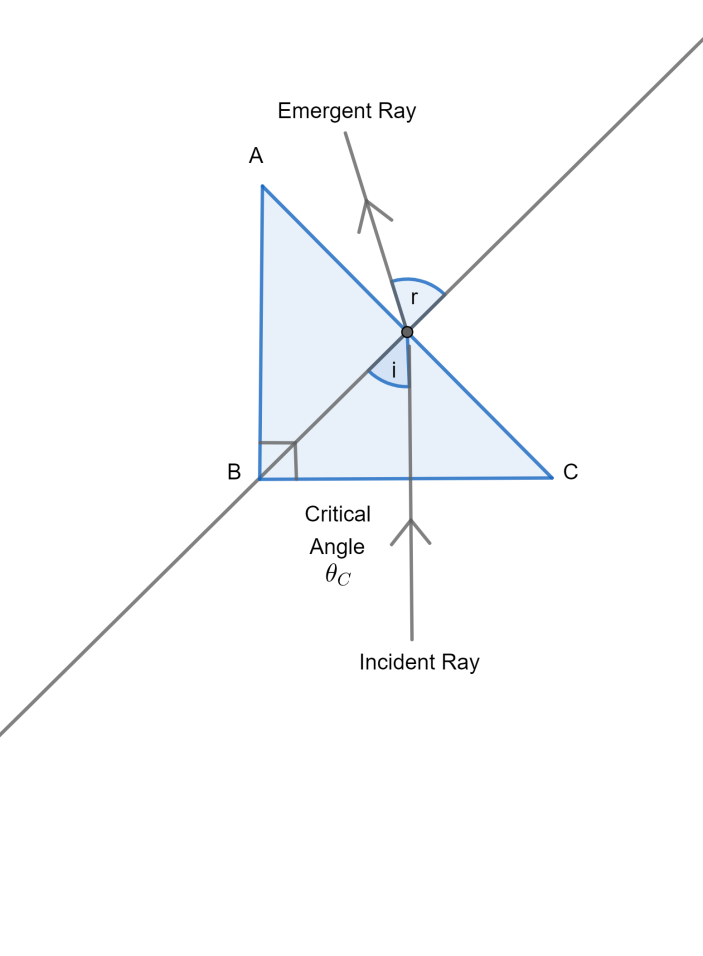Question
Question: The maximum refractive index of a prism which permits passage of the light through it when the refra...
The maximum refractive index of a prism which permits passage of the light through it when the refracting angle of the prism is 90°, is:
(A) 21
(B) 2
(C) 23
(D) 23
Solution
Firstly, use the formula for refractive index μ=sin(θC)1 and critical angle θC=90−r to find out sin(r) in terms of refractive index, μ. Secondly, use the other formula for refractive index μ=sinrsini to find out sin(i) in terms of refractive index, μ.
Lastly, use the inequality sin(i) ≤ 1, to find out the value of maximum refractive index, μ.
Complete step by step solution

Let the angle of refraction be r and the critical angle for the prism be θC. Now using the formula for refractive index in terms of the critical angle, θC:
μ=sin(θC)1
Putting θC= 90 – r in the above equation,
⇒μ=sin(90−r)1
We know that sin(90−r)=cosr (from trigonometry). Putting this in the above equation,
⇒μ=cosr1 ⇒cosr=μ1
Putting the value of cos(r) from the above equation in the general trigonometry relation:
sinr=1−cos2r gives us,
Now, another formula for the refractive index is, μ=sinrsini where ‘i' is the angle of incidence.
⇒sini=μ×sinr
Now putting our value of sin(r) in the above equation,
and also, sini<1.
⇒μ2−1⩽1 ⇒μ2−1⩽1 ⇒μ2⩽2 ⇒μ⩽2
Therefore, the maximum value of the refractive index will be equal to 2 .
Hence, option (B) is correct.
Note: We are given the refracting angle of the prism to be 90° in the question. So, alternatively as a shortcut method, we can just put this in the other formula of refractive index, μ=sin(2A)sin(A+δmin).
Where, A will be 90° and δmin will be zero.
⇒μ=sin(45)sin(90) ⇒μ=211 ⇒μ=2
